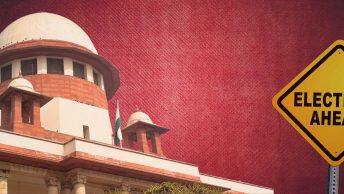Introduction: Understanding the Right -Not -To in the Backdrop of the Ideal of Transformative Constitutionalism
Justice Anthony Kennedy in his concluding remark in the verdict Obergefell v. Hodges (2015) [“Obergefell”] had debunked the concept of singlehood as socially unworthy and beyond reasonable conception. Such obtrusive contemplation of the concept of ‘singlehood’ by Justice A. Kennedy received widespread furore among the liberal legal community that was quick to point out a glaring case of encroachment upon fundamental human liberties. In a bid to reiterate (and restore) the values of transformative constitutionalism, and thereby uphold the tenets of personal liberty, Prof. Nan Hunter, brought to the world, the need for an equality in treatment of the dichotomous rights to marry, as well as not to marry. N.Hunter asserted the legal requirement to place the contrasting ideals of positive and negative liberties on a level footing, where the right-to, as well as the right-not-to, garners equal legal currency. With a liberalist premise in the backdrop, the present article seeks to measure and analyse the ‘right-not-to’, with a comparison between Justice B.L. Hansaria’s socially misplaced ‘right not to live’, as enunciated in P.Rathinam v. Union of India [ “P. Rathinam”] and Nan Hunter’s ‘right not to marry’.
Differential Legal Treatment Accorded to the Spectrum of Rights-Not-To: Segregation Premised on Public-Private Impact Assessment
A conjoint interpretation of the two rights-not-to carves out a middle-path by synthesising the two propositions where social impact created by such rights is scrutinised in the backdrop of a public-private impact assessment. Bearing in mind this public-private impact assessment, rights-not-to are accorded differential legal treatment. Such bifurcation is understood through diverging legal treatment of the right-not-to operating in the private sphere of individual life (for instance, right not to marry, right not to disclose certain private information, right not to know) in relation to the right-not-to exercised by an individual entity that operates in the public domain (such as the proscribed rights not to live, not to disclose information regarding communicable diseases and rights not to observe quarantine in event of a pandemic, on the pretext of exercising fundamental freedoms ordained by the Constitution). It is this public-private impact assessment that helps contrive the distinction between the need to legally recognise the right not to marry ensuing from Justice Kennedy’s condemnation to loneliness of those remaining unmarried, and the legal as well as social necessity of excluding right not to live from the ambit of the right to live, excepting instances where euthanasia is the sole recourse owing to a patient’s vegetative state.
A Comparison of Pronouncements in Obergefell and P.Rathinam: Positive Liberties Entail Negative Corollaries While Negative Rights Do Not Entail Converse Positive Rights
While Nan Hunter’s ‘right not to marry’ embodies a behavioural choice and hence must be acquiesced as socially harmless and acceptable, Justice Hansaria’s assertion of the ‘right not to live’ as was remarked in the verdict, Gian Kaur v. The State of Punjab (1996) [“Gian Kaur”] meddles with the very societal order that thrives on the life and vigour of young blood that is in turn subservient to social structuring. In contrast to Nan Hunter’s benign conferment of behavioural liberties, the implications of Justice Hansaria’s assignment of ‘right not to live’ exposes perils of a precious life being bartered away in a fit of churlish impulse, (saving cases pertaining to a patient’s vegetative state). At this juncture, it is noteworthy that the rights not to marry, know or disclose certain private information are exclusively intertwined with the private space of an individual (comprised within the larger ambit of right to privacy) with no immediate or far-reaching impact upon the public at large. Whereas the rights not to live, or observe quarantine during a pandemic, albeit being private endowments, have substantial bearing on public sentiment and order.
If the courts were to legally accord freehandedness in terminating or extinguishing one’s own life, the edifice of the concept of self-preservation would be tottered to the extent that any person in distress would opt for the apparent way out instead of persevering by way of sentient human faculties. The Indian Supreme Court’s verdict in Gian Kaur provides legal cushioning to the preceding argument, by formulating a comparison between positive and negative rights as a yardstick to assess the legal validity of rights-not-to. It was clarified by the Court that in cases involving positive fundamental rights alone such as rights to freedom of speech, association, movement etc., their negative corollaries (rights-not-to) come into play in order to avert intrusion. However, when the right itself is prima facie negative in essence and its very character offers protection against interference, such as the right to live, the Court opined that it is legally implausible to conceive of a “converse positive” right flowing from such right. Ergo, from the fundamental right, “no person shall be deprived of his life or personal liberty except according to procedure established by law”, the positive freedom to discontinue or extinguish the life that Article 21 protects, cannot be ascertained.
Critical Appraisal of Justice Kennedy’s Ruling in Obergefell: Averting the Error of Confirmation Bias and Social Control Mechanism
In consonance with the popular acceptance of the legal spirit as an interaction between disciplines of social sciences, the article uses the devices of social control mechanism and confirmation bias, borrowed from the branches of sociology and psychology, respectively. This has been done, so as to comprehend, appraise, and weed out elements of stigmatisation ingrained in societal (as well as legal) understanding of the espousal of singlehood by individual entities. The social control mechanism prima facie adopts negative devices to cast its influence on opinion formation, and thereby, the degree of acknowledgement and recognition of the ‘constellation of rights-not-to’, of which the right to singlehood is one component.
However, a striking lacuna that the social control mechanism presents us with is its almost invariable alignment with popular beliefs, hasty generalisations and, at times, stigmatisation, that in turn raises the spectre of an outright negation of the ideals and practices challenging the mainstream. Such propensity of the tool of social control to determine the validity and acceptance of social norms through sanction(s) in the form of coercion, force, restraint and persuasion renders the sociological mechanism ineffectual in as much as it betrays Sandra Fredman’s four-fold formulation of anti-discrimination policies, that aims at “addressing stigma, stereotyping, prejudice and violence; enhancing assimilation of disparate voices and hence, participation; redressing disadvantage and accommodating difference through transcendental and transformative equality”.
Congruently, rigid adherence to the status quo (as evidenced in the social control mechanism) hinders achievement of the transformative dimension of substantive equality owing to perversion of the notions of conformity. The transformative dimension of equality ordains the need to measure, assess and if the need be, modify or rescind the status quo in congruence with the floating and dynamic precepts of equality and liberty. While appraising the verdict pronounced in Obergefell in light of the concept of confirmation bias, it is gleaned that Justice Anthony Kennedy fell prey to predisposed biases and preconceived notions (personal as well as popular) in conceiving the right-not-to as a social aberration that needs to be rectified. Had Justice Kennedy in the instant case interpreted the ‘right not to marry’ as an offshoot of benign libertarianism that does not affect the mosaic of societal structuring, unlike the right not to live which endangers social youth prosperity, the error of confirmation bias would have been averted in the letter of law.
Conclusion: Measuring the Rights-Not-To Along a Benign Social Impact Bandwidth
As we conclude our appraisal on the need to legally recognise the right-not-to, we have ascertained that a clear line of demarcation needs to be drawn between behavioural liberties, (such as the right not to marry) that are entitlements merely personal in nature and hence mandate a reasonable degree of personal freedom so as to be accorded legal recognition, and public liberties, such as the right not to live, which contrariwise wield a lasting impact on social structuring, order and conscience. This was also enunciated Gian Kaur. It is squarely inferable that the freedom to exercise negative liberties must be measured along a spectrum that bifurcates public and private freedoms in the backdrop of a benign social impact premise. In tandem with the preceding proposition, the right not to marry constitutes a personal behavioural choice and hence gains legal currency under Articles 19(1) (a) and 21 of the Indian Constitution.
[Ed Note: This article was edited by Archita Satish and published by Suhani Paruvelly from our Student Editorial Board]Shivangi Mishra is currently pursuing masters in personal laws at Jamia Millia Islamia University, New Delhi. Her legal research articles feature on SSRN, Journal of Intersectional Analysis and Society of International Law and Policy. The author seeks to acknowledge Prof. (Dr.) Kahkashan Y. Danyal, Professor, Faculty of Law, Jamia Millia Islamia for her constant support and enriching lecture.






[…] Posted byShivangi Mishra […]
Thank you for sharing your perspective on the importance of diversity in the legal profession. Ensuring that people from all backgrounds are represented is critical to ensuring justice for all. If you’re struggling with legal issues, contact Lawyer Sonia for professional legal advice.
<a href=”https://www.lawyersonia.com/criminal-law/”>Cheque Bounce Lawyers in Bangalore</a>